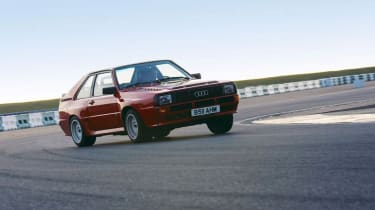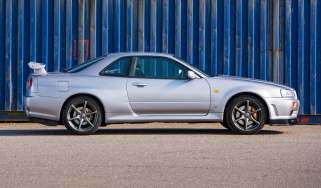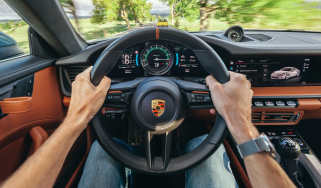“The once noble pursuit of informative and evocative dynamic imagery has been hijacked by hoonery”
The cornering shot used to be a source of education and inspiration, but its currency has been devalued in recent times, reckons Meaden

As someone who has spent more time than is sensible or healthy charting a tangential course through the side window of countless cars, you might expect me to be a staunch supporter of the cornering shot, but I’m sad to say my love of the lockstops is on the wane. Not because sliding a car has ceased to be fun, but because the once noble pursuit of informative and evocative dynamic imagery has been hijacked by hoonery. In short, the world has overdosed on oversteer.
In the dim and distant days before the Internet and its exponential obsession with a fortysomething merchandise salesman, the sight of a sliding road-car really was something to savour. Without an endless stream of online videos on which to gorge, photographs and video footage (VHS, natch) of road cars being driven with real verve was a rare treat indeed. That’s why for car nuts of a certain age, the breathtakingly raw, borderline certifiable efforts of Stefan Roser in Ruf’s ferocious Yellowbird around the Nordschleife ensure Faszination will always outclass Ken Block’s colossally successful Gymkhana series, and why black loafers will always be faster than trainers.
What’s the point of a cornering shot? Well, in the good old days it was primarily used as a graphic indication of body-roll and a car’s composure (or lack of) while being driven at or just beyond the limit. As tyre and suspension technology improved to make cars far less roly-poly, dramatic black-and-white pictures of cars on their door handles and front tyres almost peeling off the rims became a thing of the past, but a shot capturing a hard-driven car mid-corner remained a compelling source of detailed info, at least to the trained eye. To be fair it still can, but only when the goal is trying to show how a car feels and behaves, and not how much smoke or steering angle you can generate.
Sadly, the sheer performance of today’s high-performance cars, their willingness to go sideways, the need to shoot YouTube-pleasing videos and an increasing mindfulness towards the laws of the land conspire to marginalise the cornering shot. Remove a road car from the road and, unfortunately, all on-limit context and relevance is lost. Yes, the handiest ‘hands’ will still deliver the most dramatic shots (mainly because the photographers and videographers have the confidence to stand well within the morbidly tagged ‘kill zone’), but clever editing and the low-risk environs of an airfield or race track can conceal a multitude of ham-fisted sins. Anyone can skid a car when the stakes are low.
Strip away the worthy stuff and, inevitably, cornering shots have always been fuelled by ego, the challenge of pushing a car beyond its limits providing road testers with the perfect excuse to impress you lot and score points back at the office. In the ’80s and ’90s the highlight of any magazine test was the grainy images of bearded men grappling with hair-trigger hot hatches, ungainly GTs and snappy supercars. As an impressionable reader, those pictures captured my imagination just as readily as the words that accompanied them, for together they confirmed that driving fast cars fast was a career path I wished to follow. Preferably sideways, though not necessarily sporting manly facial hair.

As a fresh-faced tester, returning from my first overseas launch with a credible cornering shot was imperative. I embraced the challenge as if my very job depended on it, callow youth blinding me to the irony that this was indeed the case, but only if I stuffed the Clio into an unyielding Corsican rock face in the attempt.
The fact I’m still earning a crust as a road tester confirms I didn’t bin it, but I can still recall the tension back in Carweek’s London office as an expectant huddle gathered around the lightbox to look at the frames of transparency film. Colin Goodwin (then staffer on Carweek’s sister title, Car) immediately zeroed-in on the cornering shots. After an agonising silence, Goodwin gave his verdict. ‘Yep, he’s got the inside rear wheel way off the ground,’ uttered as though I wasn’t in the room. ‘It appears to be oversteering a bit, too.’ Sage nods from gnarly veterans like Brett Fraser and Gavin Green confirmed this was a good thing, and everyone went back to work, safe in the knowledge that if given a dog and a soapy stick the rookie road tester wouldn’t need instructions on what to do. I’d passed the test.
The better part of 25 years later, I’m still trying to perfect the art of steering one way while the car slews gracefully in the other, but these days I’m reluctantly wondering whether I’ve actually become a power-sliding parody of myself. Only you have the answer to that conundrum, so until you – or dulled reflexes – dictate otherwise, I’ll continue to slay tyres, even if only in the name of clickbait. Besides, whether it’s cigarettes or tyres, there’s nothing more sanctimonious than a reformed smoker.






